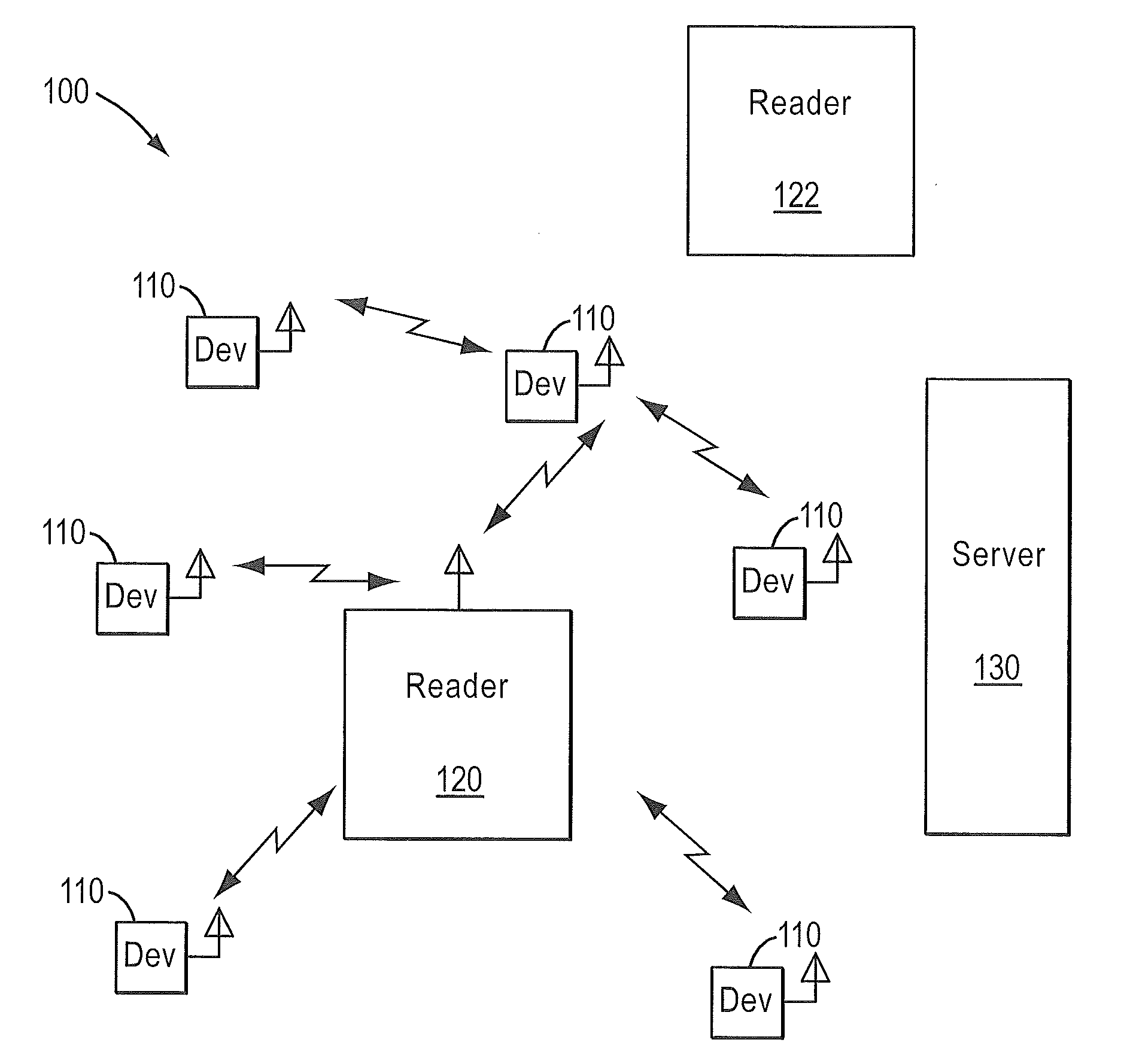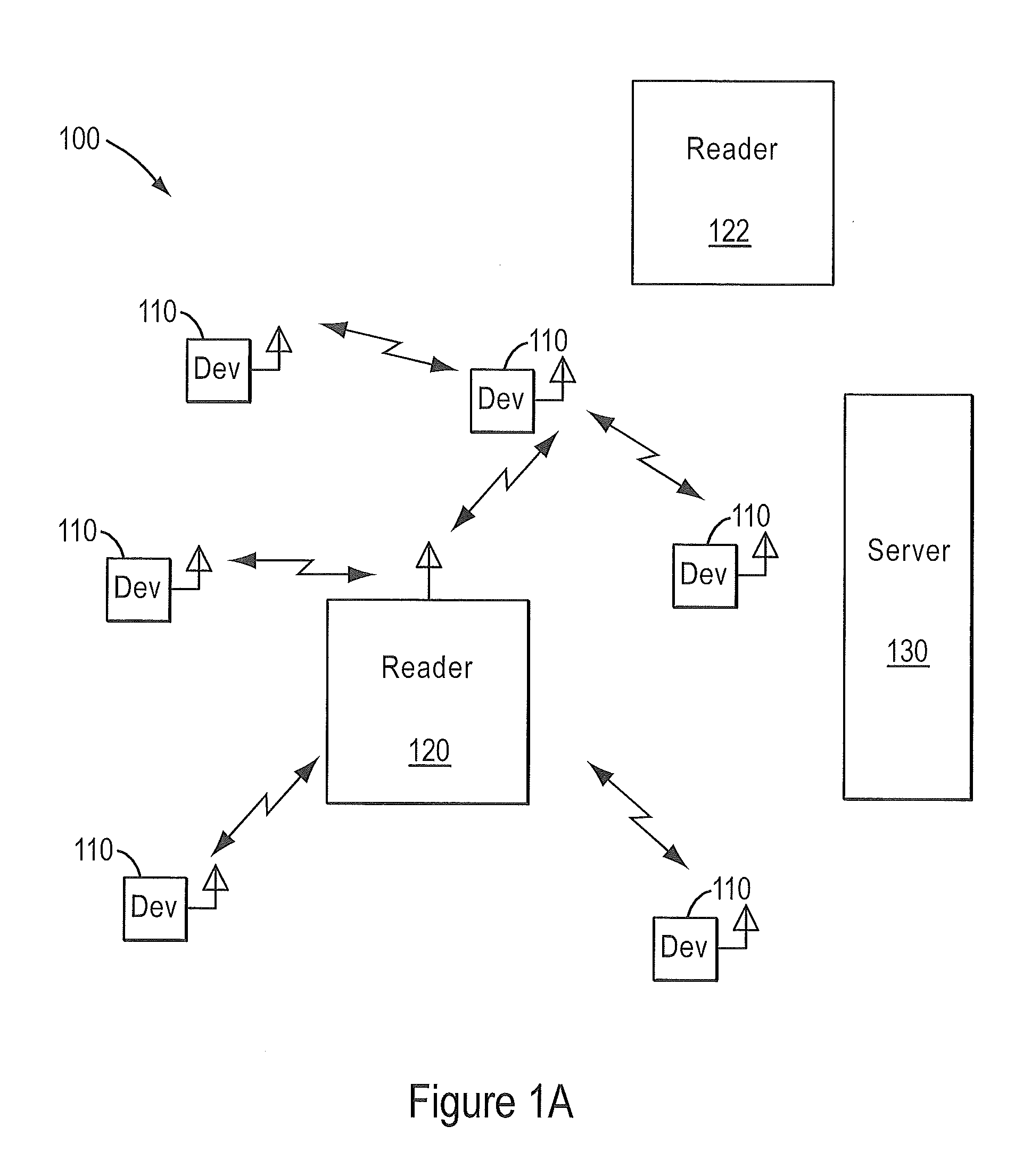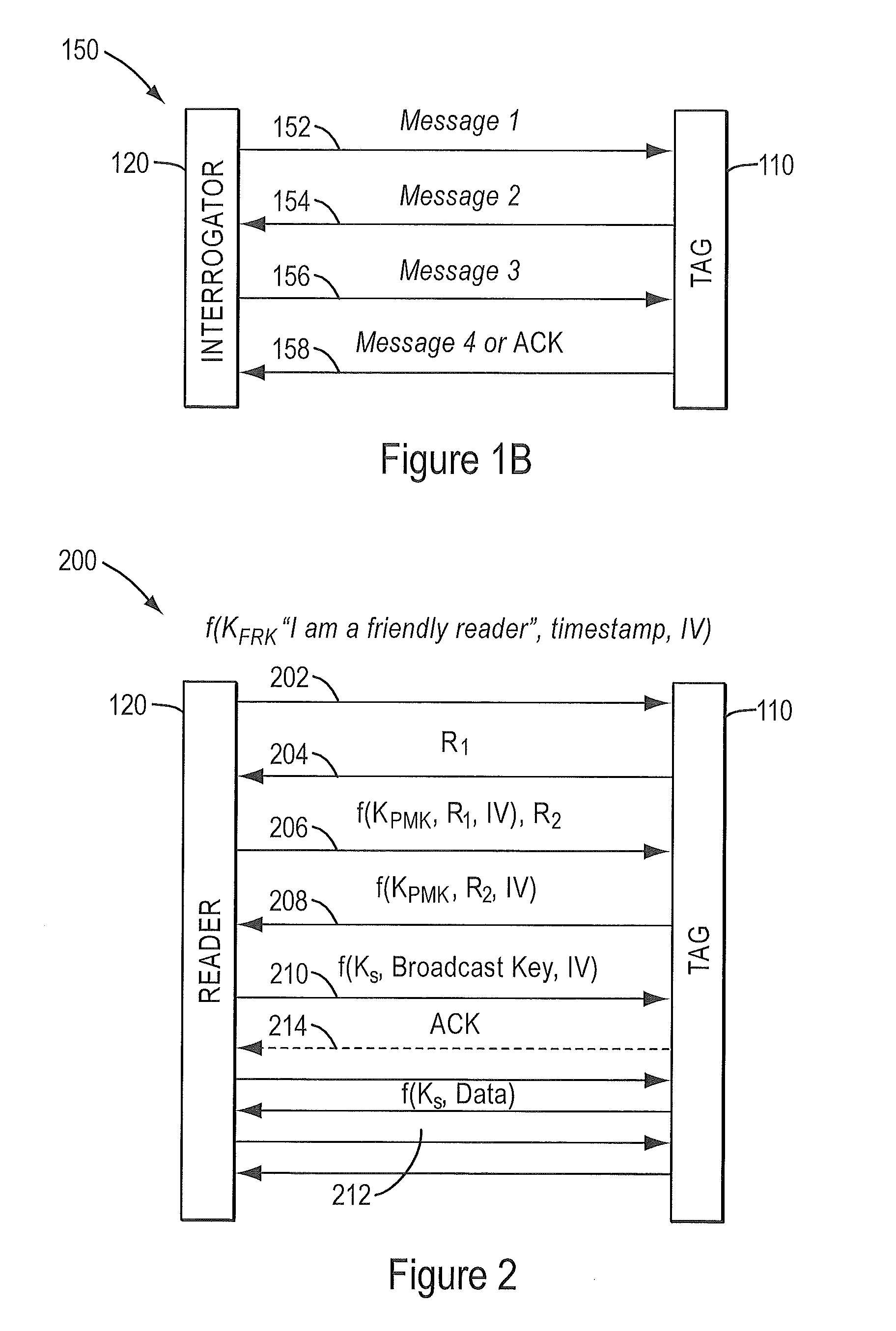RFID security and mobility architecture
a technology of rfid and mobility architecture, applied in the field of secure communications, can solve the problems of unsecured communication within the rfid system (e.g., between interrogators and tags), and the tags are vulnerable to unauthorized reading, and achieve the effect of less secure environmen
- Summary
- Abstract
- Description
- Claims
- Application Information
AI Technical Summary
Benefits of technology
Problems solved by technology
Method used
Image
Examples
Embodiment Construction
[0029]The figures and the following description relate to some embodiments by way of illustration only. It should be noted that from the following discussion, alternative embodiments of the structures and methods disclosed herein will be readily recognized as viable alternatives that may be employed without departing from the principles of the embodiments described herein.
[0030]FIG. 1A illustrates a typical radio-frequency identification (RFID) domain 100. Devices 110 are typically attached to assets that are moved into and out of an area. Reader 120 and devices 110 communicate data. In some embodiments, reader 120 can be one of many mobile or fixed interrogators. Further, in some embodiments reader 120 may be part of an integrated RFID domain and may be controlled by a central server 130 in domain 100. Server 130 may communicate with multiple other readers 122 at domain 100. Domain 100 is an example of a security domain that may exists at a terminal or shipping point.
[0031]Readers ...
PUM
 Login to View More
Login to View More Abstract
Description
Claims
Application Information
 Login to View More
Login to View More - R&D
- Intellectual Property
- Life Sciences
- Materials
- Tech Scout
- Unparalleled Data Quality
- Higher Quality Content
- 60% Fewer Hallucinations
Browse by: Latest US Patents, China's latest patents, Technical Efficacy Thesaurus, Application Domain, Technology Topic, Popular Technical Reports.
© 2025 PatSnap. All rights reserved.Legal|Privacy policy|Modern Slavery Act Transparency Statement|Sitemap|About US| Contact US: help@patsnap.com



